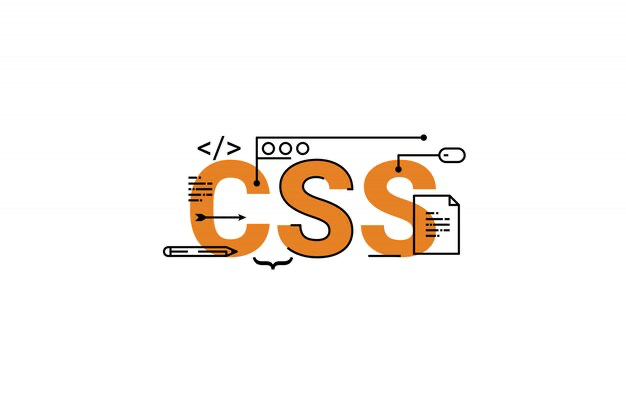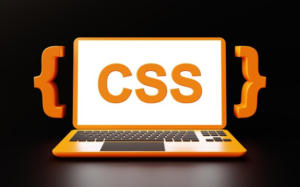
CSS Image Styling: How to Add
When it comes to web development, HTML, CSS, and Javascript are the three essential languages that play a crucial role in creating a visually appealing website. While HTML provides the framework for the website, CSS is responsible for adding style and design elements to make it more attractive. In this article, we will focus on CSS and explore different ways to add, center, resize, align, and add background images to a website.
How to Add an Image in CSS?
Before we dive into the different techniques of styling images with CSS, it’s important to understand that the job of CSS is to enhance the design of the website’s structure. Therefore, we will be adding the image through HTML using the <img> inline element. This element allows us to specify the image’s source, link, and other necessary attributes. With the help of CSS, we can then manipulate the image’s proportions, size, and other styles.
To add an image using HTML, we use the following code:
<img src="image-source.jpg" alt="image description">The src attribute specifies the location of the image file, while the alt attribute provides a text description of the image. This is important for accessibility purposes and also helps with SEO.
Now let’s take a look at some CSS properties that can be used to style images.
Border Property
The border property is used to specify the border around an image. It takes three values – width, style, and color – separated by a space. For example:
border: 2px solid black;This will create a 2-pixel wide black border around the image. You can also use individual properties to define the border, such as border-width, border-style, and border-color.
Height and Width Properties
The height and width properties are used to specify the size of an image. These properties can be set in pixels, percentages, or using other units such as em or rem. For example:
height: 200px;This will set the height of the image to 200 pixels. Similarly, you can use the width property to set the width of the image.
It’s important to note that when setting the height and width of an image, it’s recommended to maintain the aspect ratio to avoid distorting the image.
Margin and Padding Properties
The margin and padding properties can also be used to add space around an image. The margin property adds space outside the border, while the padding property adds space inside the border. Both properties take four values – top, right, bottom, and left – separated by a space. For example:
margin: 10px 20px 10px 20px;This will add 10 pixels of margin on the top and bottom, and 20 pixels on the left and right of the image.
How to Centre an Image in CSS?
Now that we know how to add an image using HTML and style it with CSS, let’s move on to centering the image on the webpage. There are a few different ways to achieve this, depending on the layout of your website.
Using Text-Align Property
If the image is within a block-level element, such as a <div>, you can use the text-alignproperty to center it. This property is usually used to align text, but it can also be used to center images. For example:
<div>
<img src="image-source.jpg" alt="image description">
</div>
div {
text-align: center;
}This will center the image within the <div> element.
Using Margin Property
Another way to center an image is by using the margin property. We can set the left and right margins of the image to auto, which will automatically center it within its parent element. For example:
<div>
<img src="image-source.jpg" alt="image description">
</div>
img {
margin: 0 auto;
}This will center the image horizontally within the <div> element.
How to Resize an Image in CSS?
Resizing images is a common task when it comes to web development. It’s important to resize images properly to maintain their quality and avoid distorting them. Let’s take a look at some ways to resize images using CSS.
Using Height and Width Properties
As mentioned earlier, the height and width properties can be used to specify the size of an image. To resize an image, we can simply change these values. However, it’s important to maintain the aspect ratio to avoid distorting the image. For example:
<img src="image-source.jpg" alt="image description">
img {
height: 200px;
width: 300px;
}This will resize the image to 200 pixels in height and 300 pixels in width.
Using Max-Width Property
The max-width property can also be used to resize images. This property specifies the maximum width an element can have. If the image is larger than the specified width, it will be resized to fit within the given dimensions while maintaining its aspect ratio. For example:
<img src="image-source.jpg" alt="image description">
img {
max-width: 100%;
}This will resize the image to fit within the width of its parent element.

How to Align an Image in CSS?
Aligning images is another important aspect of CSS image styling. There are different ways to align images, depending on the layout of your website. Let’s explore some techniques for aligning images using CSS.
Using Float Property
The float property is commonly used to align images within a block-level element. It allows the image to be moved to the left or right of its parent element, with other content wrapping around it. For example:
<img src="image-source.jpg" alt="image description">
img {
float: left;
}This will align the image to the left of its parent element.
Using Flexbox
Flexbox is a powerful CSS layout model that allows us to create flexible and responsive layouts. We can use flexbox to align images both horizontally and vertically. For example:
<div class="container">
<img src="image-source.jpg" alt="image description">
</div>
.container {
display: flex;
justify-content: center; /* aligns items horizontally */
align-items: center; /* aligns items vertically */
}This will center the image both horizontally and vertically within the container.
How to Add a Background Image in CSS?
In addition to adding images within HTML elements, we can also use CSS to add background images to our webpage. This allows us to have more control over the placement and styling of the image. Let’s take a look at how we can add a background image using CSS.
Using Background-Image Property
The background-image property is used to specify the background image of an element. It takes the URL of the image as its value. For example:
<div>
<h1>Hello World!</h1>
</div>
div {
background-image: url("image-source.jpg");
}This will set the background image of the <div> element to “image-source.jpg”.
Using Background-Size Property
The background-size property allows us to specify the size of the background image. It takes two values – width and height – separated by a space. For example:
div {
background-image: url("image-source.jpg");
background-size: cover;
}This will resize the background image to cover the entire element.
Using Background-Position Property
The background-position property is used to specify the position of the background image within its parent element. It takes two values – horizontal and vertical position – separated by a space. For example:
div {
background-image: url("image-source.jpg");
background-position: center top;
}This will position the background image at the center of the element’s top edge.
CSS Interview Questions and Image Styling
Preparing for a CSS interview requires a solid understanding of various concepts, including image styling. Understanding how to style images using CSS is essential for creating visually appealing websites. Being prepared with CSS interview questions related to image styling not only reinforces your knowledge but also helps in confidently tackling interviews and advancing your career in web development. Practice these concepts regularly to master CSS image styling and ace your next interview.
Conclusion
In conclusion, CSS plays a crucial role in styling images on a website. By using different properties and techniques, we can add, center, resize, align, and add background images to our webpages. It’s important to understand the basics of CSS and how it interacts with HTML to create visually appealing websites. With practice and experimentation, you can master the art of CSS image styling and take your web development skills to the next level.

